Occupational Dermatoses
NOTE: This page is archived for historical purposes and is no longer being maintained or updated.
Slides 71 to 75
Slide 71 - Biological
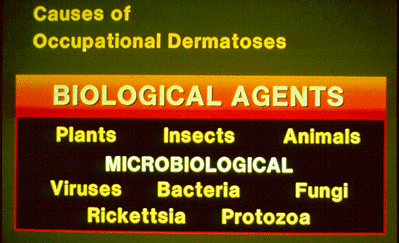
Biological agents act as the fourth direct cause of occupational dermatoses. Not only plants, insects and animals, but also microbiologic viruses, rickettsia, bacteria, fungi, protoza and other parasites attack the skin and sometimes produce systemic disease as well. All necessary precautions must be exercised whenever occupational exposure to these agents can occur.
Slide 72 - Anthrax
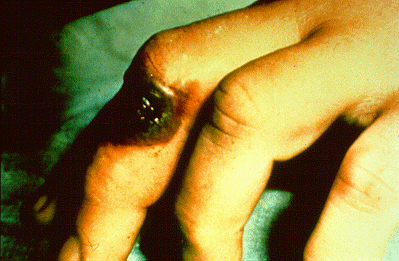
Cutaneous anthrax can be found in workers who handle animal products. In the United States, the most common cause is imported animal hair and raw wool contaminated with anthrax spores.
Slide 73 - Sporotrichosis
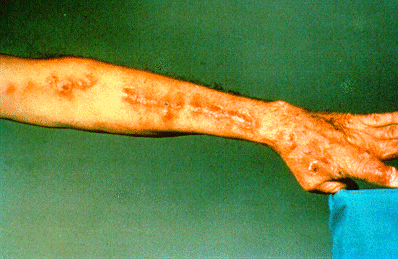
Fungi whose natural home is in the soil or in vegetation cause infections that may be occupational in origin. Sporotrichisis often develop after trauma break the skin, for example, when handling mine timbers, rose bushes, straw, sphagnum moss and other natural products. This florist represents a classic example of sporotrichosis, with nodules along the lymphatic vessels.
Slide 74 - Mycetoma
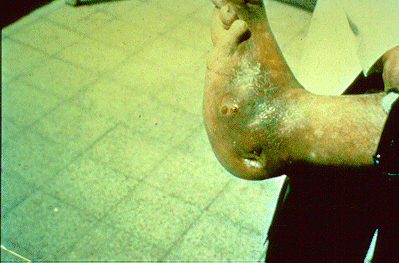
Other fungi causing mycetoma and chromoblastomycosis become implanted when workers lack proper shoes and other protective clothing. This mycetoma in an agricultural worker was caused by an actinomycete.
Slide 75 - T. Verrucosum
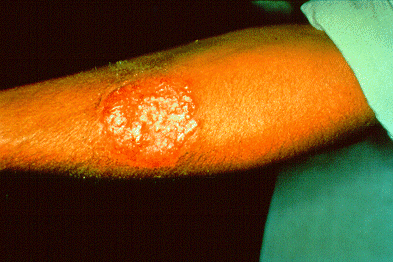
Zoophilic fungi characteristically produce inflammatory infections in man. This cattle rancher's tinea corporis was due to Trichophyton verrucosum
- Page last reviewed: January 5, 1998 (archived document)
- Content source:
- National Institute for Occupational Safety and Health Health Effects Laboratory Division (HELD)


 ShareCompartir
ShareCompartir